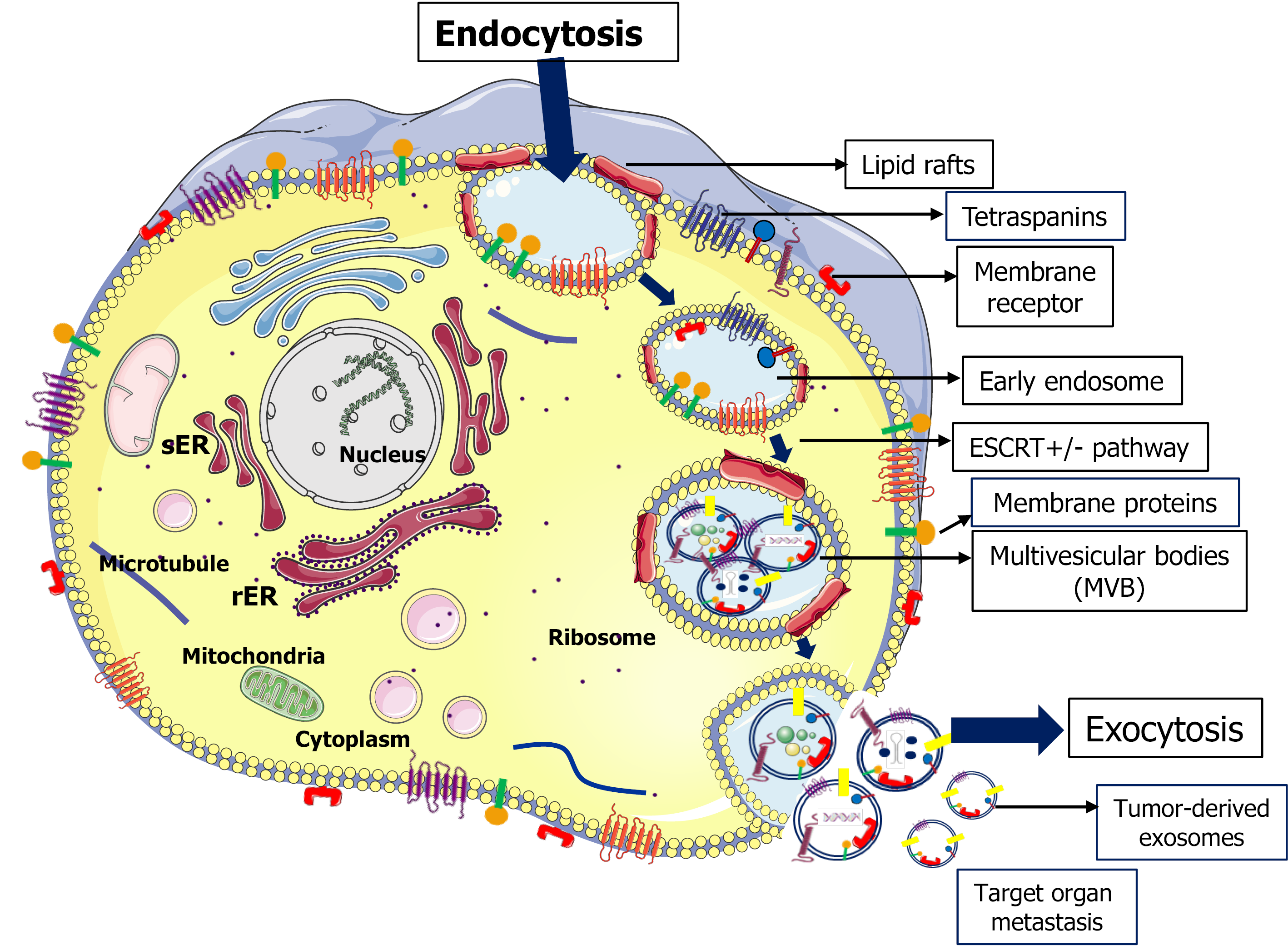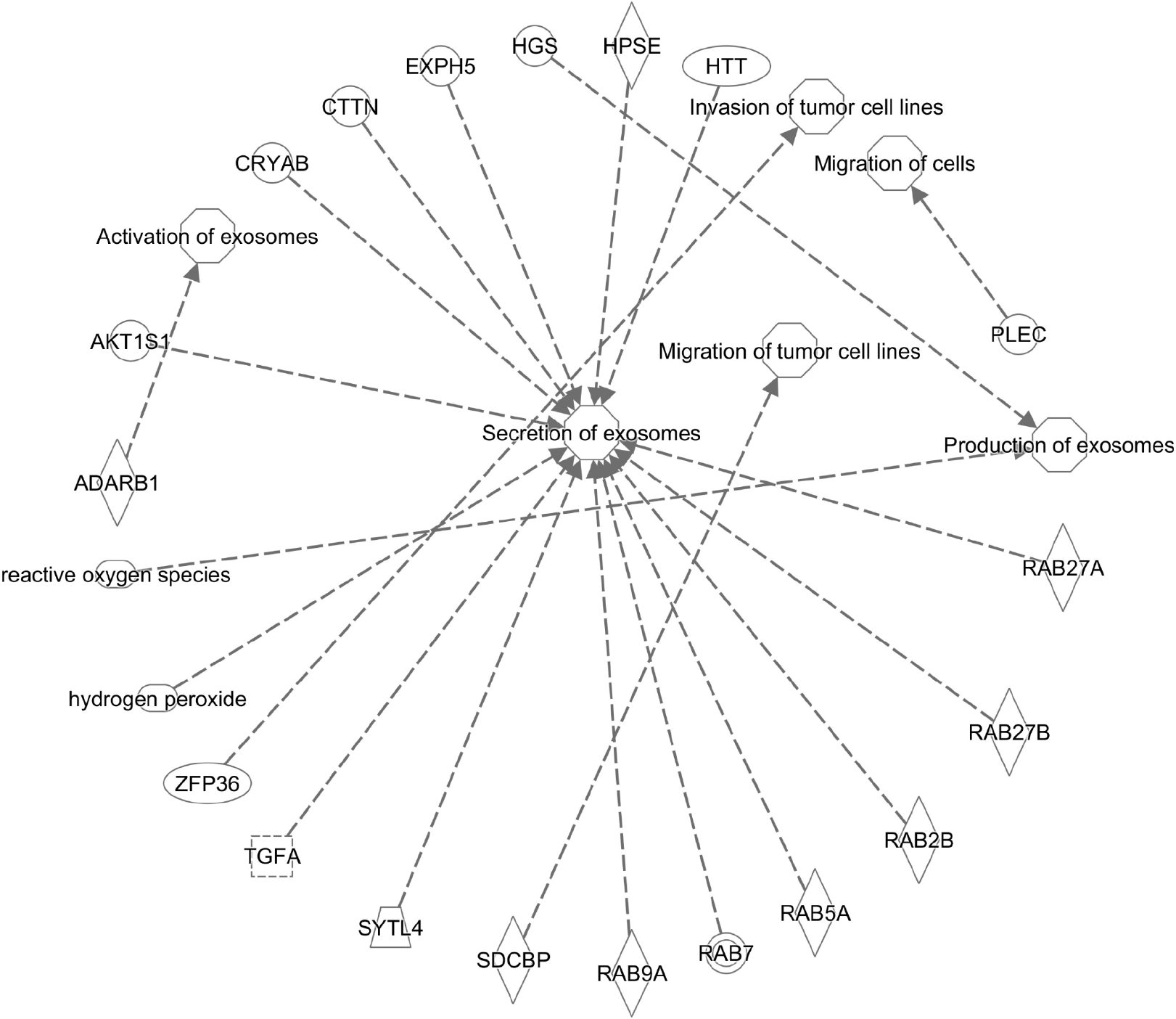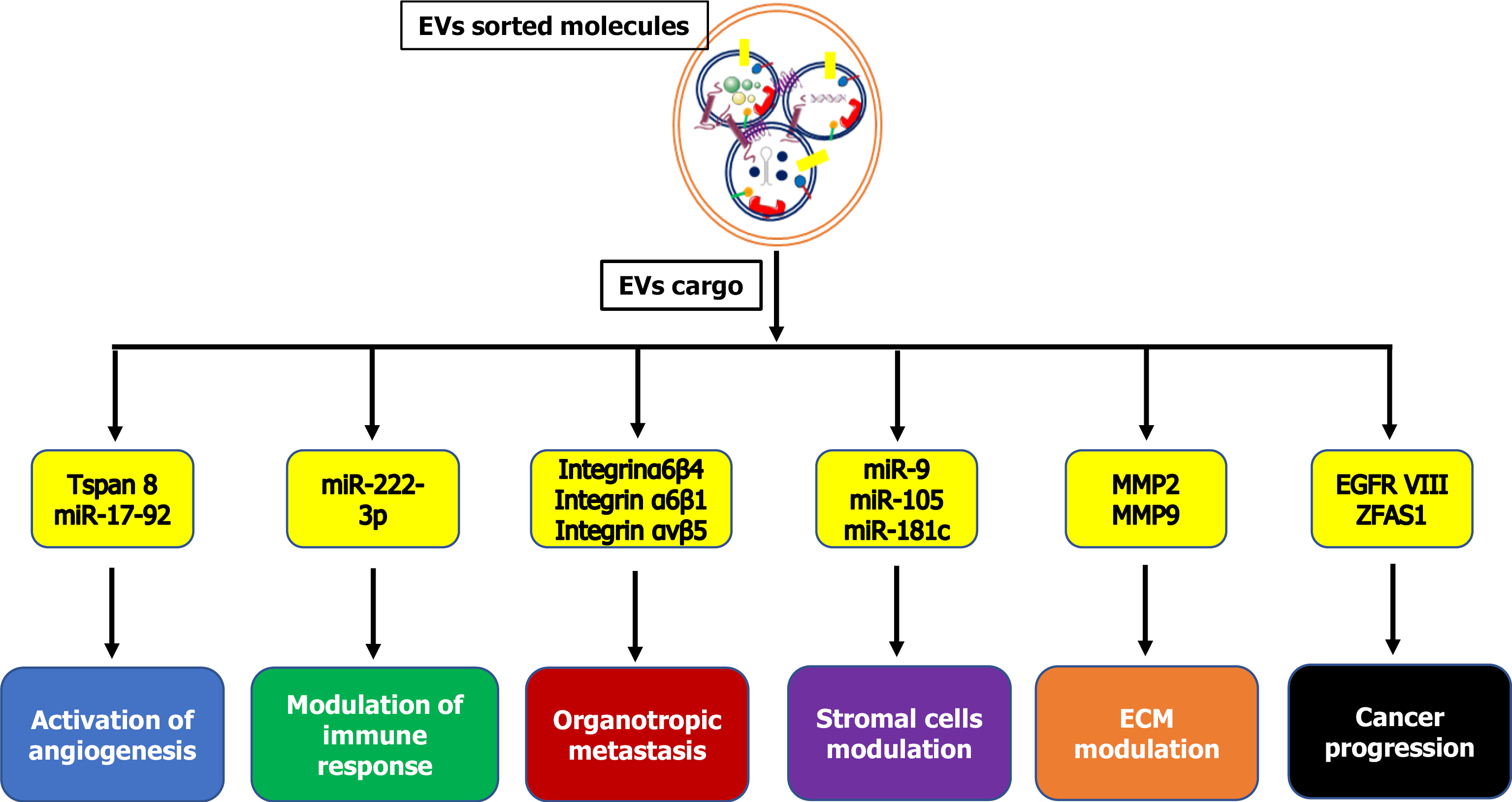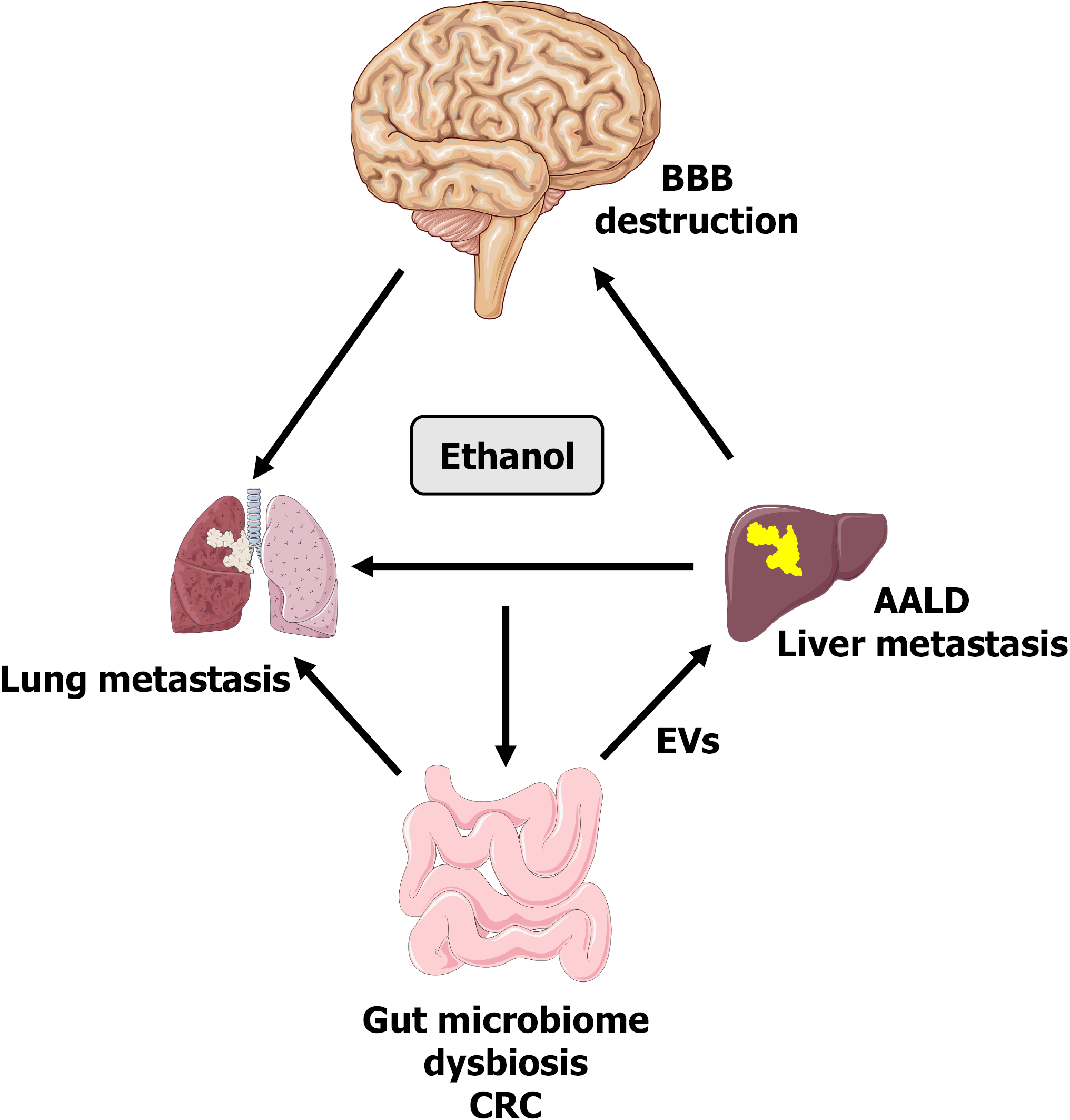Copyright
©The Author(s) 2021.
World J Gastroenterol. Nov 7, 2021; 27(41): 7080-7099
Published online Nov 7, 2021. doi: 10.3748/wjg.v27.i41.7080
Published online Nov 7, 2021. doi: 10.3748/wjg.v27.i41.7080
Figure 1 Extracellular vesicle biogenesis.
Pathways involved in extracellular vesicle (EV) generation from the endocytosis of cargo components to release of targeting exosomes. EV biogenesis is achieved by endosomal sorting complex required for transport (ESCRT)-dependent or ESCRT-independent pathways. Several cytoplasmic and nuclear molecules can be sorted in the EVs such as ubiquitin-related proteins, heat shock proteins, miRNAs, and cytoskeleton proteins. ESCRT: Endosomal sorting complex required for transport; sER: Smooth endoplasmic reticulum; rER: Rough endoplasmic reticulum.
Figure 2 Exosome network analysis.
Based on Ingenuity Pathway Analysis, distinct molecules from different tissues and cells can be involved in exosome secretion during cancer progression as well as in diagnostic functions. CRYAB: Chaperone alphaB-crystallin; CTTN: Cortactin; EXPH5: Exophilin 5; HGS: Hepatocyte growth factor; HPSE: Heparinase; HTT: Huntingtin protein; PLEC: Plectin; RAB27A: Ras-related protein Rab-27A; RAB27B: Ras-related protein Rab-27B; RAB2B: Ras-related protein Rab-2B; RAB5A: Ras-related protein Rab-5A; RAB7: Ras-related protein Rab-7; RAB9A: Ras-related protein Rab-9A; SDCBP: Syndecan binding protein; SYTL4: Synaptotagmin like 4; TGFA: Transforming growth factor alpha; ZFP36: Zinc finger protein 36; ADARB1: Adenosine deaminase RNA specific B1; AKT1S1: AKT1 Substrate 1.
Figure 3 Exosome-mediated functions in the pre-metastatic niche.
The role of tumor-derived exosomes along the establishment and progression of metastatic disease. Extracellular vesicle cargo can be involved in the initiation and regulation of cancer by promoting immune responses, angiogenesis, extracellular matrix modulation, stromal cell changes and metastatic organotropism. EVs: Extracellular vesicles; Tspan8: Tetraspanin-8; MMP2: Matrix metallopeptidase 2; MMP9: Matrix metallopeptidase 9; EGFR VIII: Epidermal growth factor receptor variant III; ZFAS1: ZNFX1 antisense RNA1; ECM: Extracellular matrix.
Figure 4 Model of extracellular vesicle interactions along the gut/liver/lung/brain axis during alcohol disorders and cancer progression.
Alcohol exposure leads to enhanced gut microbiome dysbiosis, the development of alcohol-associated liver disease, lung inflammation, and neurological manifestations. The potential role of tumor- and alcohol-derived extracellular vesicles (EVs) in advanced malignancies is a potential consequence of EV organ-organ communication during alcohol disorders. BBB: Blood brain barrier; CRC: Colorectal cancer; AALD: Alcohol-associated liver disease.
- Citation: Kuracha MR, Thomas P, Tobi M, McVicker BL. Role of cell-free network communication in alcohol-associated disorders and liver metastasis. World J Gastroenterol 2021; 27(41): 7080-7099
- URL: https://www.wjgnet.com/1007-9327/full/v27/i41/7080.htm
- DOI: https://dx.doi.org/10.3748/wjg.v27.i41.7080












